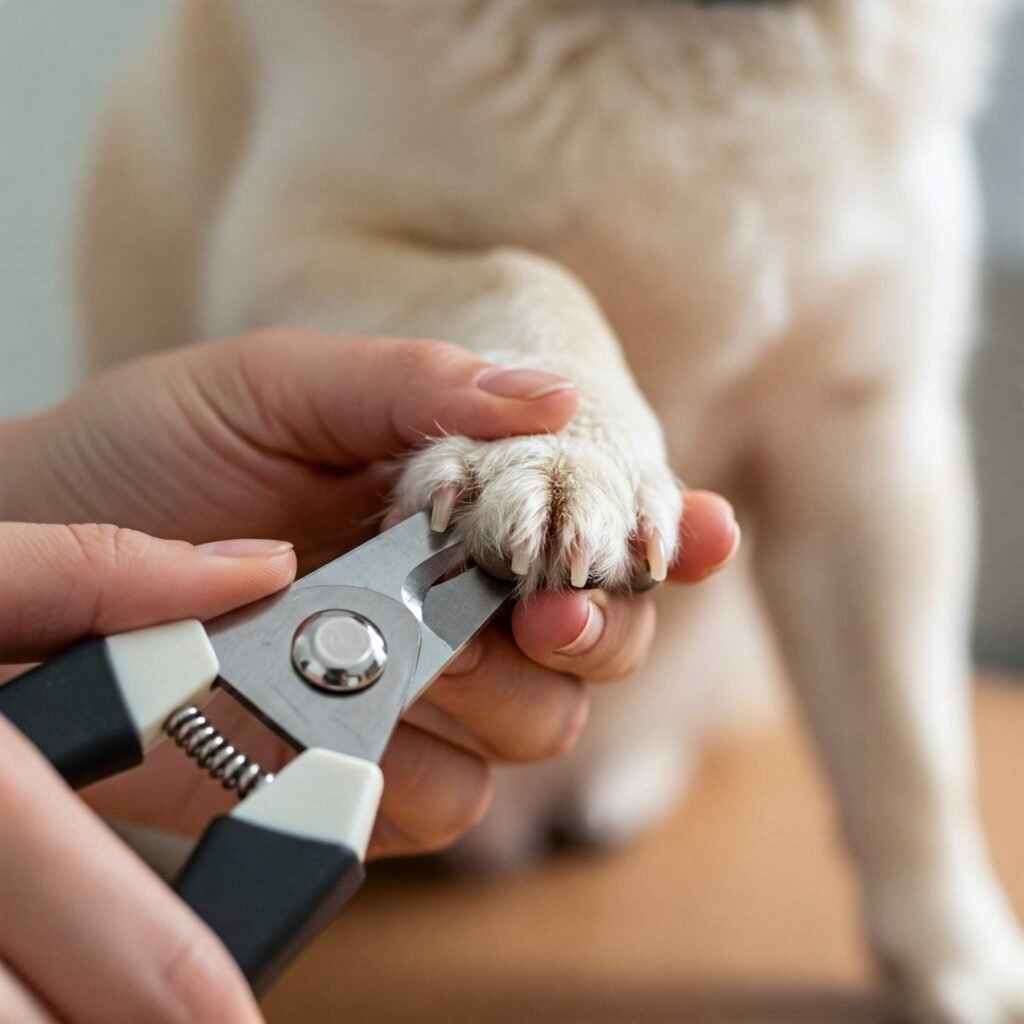As a seasoned pet parent, you understand the importance of regular grooming for your furry companion. Among these tasks, how to trim your dog’s nails often ranks high on the list of dreaded activities. The mere sight of the clippers can send some dogs into a frenzy, turning a necessary routine into a stressful ordeal for both you and your beloved pet. But fear not! With the right approach, patience, and a few expert tips, you can learn how to trim your dog’s nails calmly and effectively, transforming it from a battle into a bonding experience.
Understanding Why Regular Nail Trimming is Crucial
Before we dive into the “how-to,” let’s briefly touch upon the “why.” Neglecting your dog’s nails can lead to several problems:
- Discomfort and Pain: Overgrown nails can press uncomfortably into the paw pads, causing pain and affecting your dog’s gait.
- Injury Risk: Long nails are more prone to snagging and tearing, leading to painful injuries and potential infections.
- Skeletal Issues: In severe cases, consistently overgrown nails can even contribute to skeletal misalignments and arthritis.
- Damage to Your Home: Long nails can scratch floors, furniture, and even you!
Therefore, mastering how to trim your dog’s nails is an essential part of responsible pet ownership.
Preparing for a Stress-Free Nail Trimming Session
The key to a drama-free nail trimming experience lies in preparation and creating a positive association. Here’s how to trim your dog’s nails by setting the stage for success:
Choosing the Right Tools
- Dog Nail Clippers: There are two main types:
- Guillotine Clippers: These have a hole through which you insert the nail and a blade that comes down to trim. They are best for smaller to medium-sized dogs.
- Scissor Clippers: These resemble small scissors and offer more control, making them suitable for all sizes.
- Styptic Powder: This is crucial for stopping bleeding if you accidentally cut the quick (the pink part of the nail containing blood vessels and nerves). Have it readily available. You can find it at most pet stores.
- Treats: High-value treats are your best friend! Use them to reward calm behavior and create positive reinforcement.
- Towel or Mat: A comfortable and familiar surface can help your dog feel more secure.
Creating a Calm Environment
- Choose a Quiet Time: Avoid times when your dog is already agitated or excited.
- Find a Comfortable Spot: This could be on the floor, on your lap, or at a table if your dog is comfortable with it. Ensure good lighting.
- Get Your Dog Comfortable: Spend a few minutes petting and talking to your dog calmly before bringing out the clippers.
Step-by-Step Guide on How to Trim Your Dog’s Nails
Now, let’s get to the practical steps on how to trim your dog’s nails effectively:
- Get Your Dog Used to Their Paws Being Handled: Before you even think about the clippers, regularly touch and massage your dog’s paws and toes. Reward them with treats for staying calm. This desensitization process is crucial.

- Introduce the Clippers: Let your dog sniff the clippers and associate them with positive reinforcement. Give them a treat when they show curiosity or remain calm around the clippers.
- Identify the Quick: This is the pink part inside the nail that contains blood vessels and nerves. It’s vital to avoid cutting this area, as it will cause pain and bleeding. If your dog has dark nails, it can be harder to see the quick. In such cases, trim small amounts at a time. A good rule of thumb is to trim just before the nail starts to curve.
- Outbound Reference Link: American Kennel Club – How to Trim Your Dog’s Nails
- Position Your Dog and Their Paw: Hold your dog’s paw firmly but gently. Extend one toe at a time.
- Trim Small Amounts: This is the golden rule of how to trim your dog’s nails safely. Angle the clippers so you are cutting the tip of the nail. For light-colored nails, aim to cut just before the pink quick. For dark nails, trim a tiny bit at a time until you see a chalky white or gray center. If you see a black dot appearing, stop – you’re close to the quick.

- Reward Immediately: After each successful trim (even if it’s just one nail), give your dog a treat and praise them enthusiastically. This positive reinforcement will help them associate nail trimming with a positive experience.
- Take Breaks: If your dog becomes stressed at any point, stop and take a break. Try again later or the next day. It’s better to do a little at a time than to force them and create a negative association.
- Dealing with the Dewclaws: Don’t forget the dewclaws, which are located higher up on the leg. These nails don’t touch the ground and can often grow into a curl if not trimmed.
- What to Do if You Cut the Quick: Accidents happen. If you accidentally cut the quick and the nail starts to bleed, don’t panic. Apply styptic powder generously to the bleeding nail. The bleeding should stop within a few minutes. Speak to your veterinarian if the bleeding persists.
- Outbound Reference Link: VCA Animal Hospitals – Nail Trimming in Dogs
Making Nail Trimming a Positive Experience
Consistency and positive reinforcement are key to making how to trim your dog’s nails a less stressful event.
- Start Young: If you have a puppy, get them used to having their paws handled and their nails trimmed from a young age.
- Regular Practice: Even if you only trim one or two nails at a time, regular practice will help your dog become more comfortable with the process.
- Positive Reinforcement: Continue to reward calm behavior with treats, praise, and affection.
- Consider Professional Help: If you are still struggling or feel uncomfortable trimming your dog’s nails, don’t hesitate to seek help from a professional groomer or your veterinarian. They can provide guidance and perform the trims for you.








































